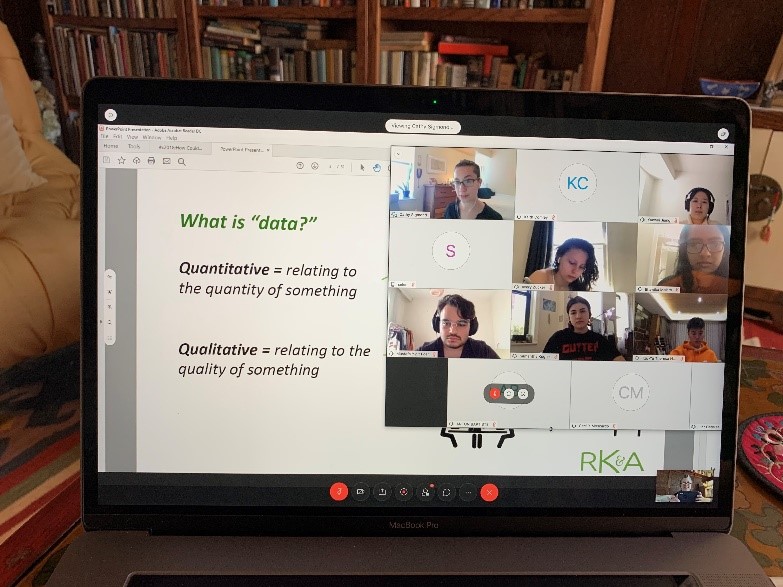This is an Eval Central archive copy, find the original at rka-learnwithus.com.
For the past few years, I’ve traveled to New York City every spring to do a guest lecture for a class of graduate students who are part of the Fashion Institute of Technology’s (FIT) Exhibition and Experience Design program. For obvious reasons, I couldn’t go in person this year, but luckily we were still able to connect remotely through WebEx. The students called in from their homes around the world—some in New York but others as far as Turkey, Taiwan, and India!
Since these are exhibition designers in training, I focus my talk each year on how evaluation fits into exhibition design. What does evaluation look like in this context? As designers, what might you want to test, when, and how? I always try to find a balance between talking about evaluation theory (the big picture stuff) and sharing a mix of practical examples from RK&A’s diverse portfolio of work. Using real examples from our front-end, formative, and summative exhibition evaluations helps students get a sense of what exhibition evaluation really looks like.

I’m usually excited for this lecture because it’s a chance to talk about an area of evaluation I’m very passionate about. This year, however, I was also somewhat nervous going into it because of the precarious state of the world and museums right now. Would students be able to see the value of evaluation to their work as budding designers or would they feel too distracted by our global circumstances to find meaning in these ideas (which, frankly, would be completely understandable)? I was also nervous about whether I could accurately convey the field of evaluation to these students when it—just like everything else—feels like it is changing so fast under these new stay-at-home circumstances. Would examples of past exhibition evaluation projects, many of which involved testing onsite with museum visitors, feel irrelevant in this time of uncertainty for the museum field?
Luckily, my worries were for nothing. The students showed up with a tenacious curiosity and infectious energy (which was especially impressive given that we were all in different time zones!), and we had a lively conversation about how evaluation can help designers move forward confidently in their work. When they asked about sampling methods (how many, how do you recruit people, etc.), I was able to answer honestly that while the answer is always and will always be “it depends,” this principle is more true now than ever. Although I momentarily worried this answer would disappoint students (even if it’s true), they surprised me and instead seemed invigorated by the idea of adaptable, flexible evaluation studies, since this aligns so well with the notion of experimentation and iteration that permeates their design training. Their enthusiasm gave me confidence to embrace flexibility in our evaluation projects (more on that soon!). As Amanda said, now is the time to put on our creative thinking hats. I’m grateful to the FIT class for the invitation to speak and for being so cheerfully open-minded in times like this.
The post Finding Inspiration through Designers-in-Training appeared first on RK&A.